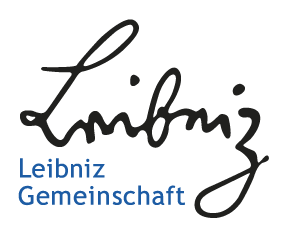TPDL workshop on production, distribution, sharing and use of scientific videos
An informative workshop on “Videos in Digital Libraries: What’s in it for Libraries, Publishers and Scientists?” took place during the conference “Theory and Practice of Digital Libraries” (TPDL) at Hannover Congress Centrum on 8 September 2016. The workshop was organised by the German National Library of Science and Technology (TIB) together with CERN and the Central and Regional Library Berlin (ZLB).

The aim of the workshop was to initiate a discussion on the use and potential of videos as a method of scholarly communication, and was thus directed at researchers, science communicators, publishers and libraries. The participants debated the benefits of video production for researchers, discussed production and distribution processes, and conferred over the sharing and use of scientific videos.
James P. Dacey (IOP Publishing) opened the workshop with a lecture entitled “Embracing Videos in Scholarly Publishing: The IOP Publishing Experience”. Dacey provided an overview of the use of videos at IOP Publishing. He explained that many researchers, science journalists and bloggers highly appreciate web videos, as they enable them to reach additional communities. According to Dacey, videos open up new opportunities to tell scientific stories in a visual and easily accessible form. Moreover, videos provide valuable insights into the scientific process and the professional life of researchers.
Thilo Körkel (Spektrum der Wissenschaft) presented the “SciViews” web portal in his lecture “Journalistic Curation of Science Videos”. SciViews is operated by the “Spektrum der Wissenschaft” publishing house, which focuses on curating popular science videos. Körkel explained that the editors of SciViews choose videos from different sources on the basis of journalistic criteria. They asked science journalists to write short reviews and then published the videos on the website. One advantage is the high level of heterogeneity of the scientific videos that they have found on the internet. The experiences in connection with SciViews show that videos are a large asset for science communication, but, taken individually, frequently show a lack of journalistic quality and are often unreliable sources of information.

Xenia van Edig (Copernicus Publications) told participants about the successful cooperation between Copernicus Publications and TIB in her lecture entitled “Video Abstracts and Video Supplements to Scientific Articles: Experiences from Copernicus Publications”. Authors at Copernicus have the opportunity to upload video abstracts to TIB’s AV Portal and link them to scientific articles on the Copernicus website. TIB hosts the videos on the AV Portal, allocates DOIs for permanent referencing capability and manages digital preservation and licensing. According to van Edig, YouTube is not an appropriate platform for scientific videos as accompanying material or video abstracts, because it does not offer the long-term availability, licensing and citability of audiovisual media necessary for scientific work. In addition, systematic linking to other websites is not possible on YouTube.

Tilman Scheel (Reelport GmbH) introduced the AVA project in his lecture “Videos in Public Libraries: New Models of Collaboration in Europe”. Supported by the MEDIA Programme of the European Union, the aim of AVA is to establish a new infrastructure for access to film content. The project’s cooperation partners are major film festivals that select and curate films and clarify copyright issues; public libraries that screen these films; and PicturePipe, a service provider from Reelport GmbH, which makes the video-on-demand technology available. In his lecture, Scheel gave a detailed description of the AVA project’s workflow.
Oliver Karras (Software Engineering Group, Leibniz Universität Hannover) presented the group’s ideas in “Enriching Requirements Specifications with Videos: Enhancing the Comprehensibility of Textual Requirements”. His theme was to make software specifications easier to understand by using video. Karras defined five guidelines in his lecture, which help engineers to identify specification content that is suitable for video visualisation. He also talked about the perspectives, benefits and obstacles that arise when text-based specifications are depicted by means of video.

Attila Dávid Molnár (Filmjungle Society) presented the services provided by the production company Filmjungle in his lecture “How to Turn an Abstract into a Video Abstract”. He and his colleagues teach researchers and students how to produce video abstracts as additional material to their scientific articles themselves. By doing this, explained Molnár, video abstracts can reach a broader and totally new audience. Molnár reported about the experience he gained during his workshops in Hungary and Germany (including at TIB).
The individual contributions of the authors are available on the website of the workshop “Videos in Digital Libraries: What’s in it for Libraries, Publishers and Scientists?”. You can watch, download and cite (via DOI) the recorded lectures free of charge from TIB’s AV Portal.
In my opinion, the workshop was very successful, not least due to the highly committed speakers. Networking and a live presentation of the AV Portal followed the workshop. I would like to thank Mr. Philipp Störtenbecker of Elsa for recording the workshop.
... ist Product Owner des TIB AV-Portals // ... is product owner of the TIB AV Portal




Eine Antwort auf “TPDL workshop on production, distribution, sharing and use of scientific videos”